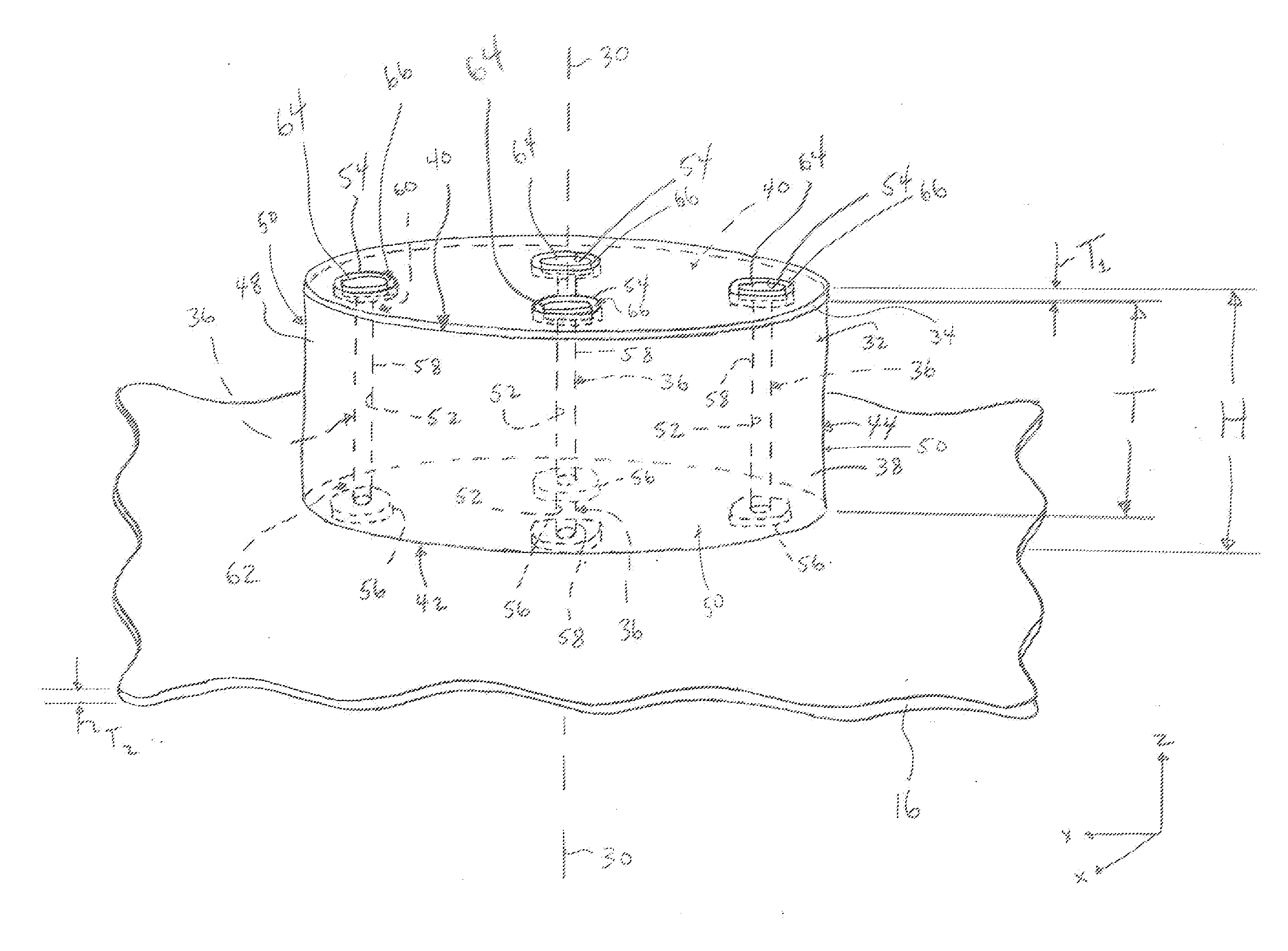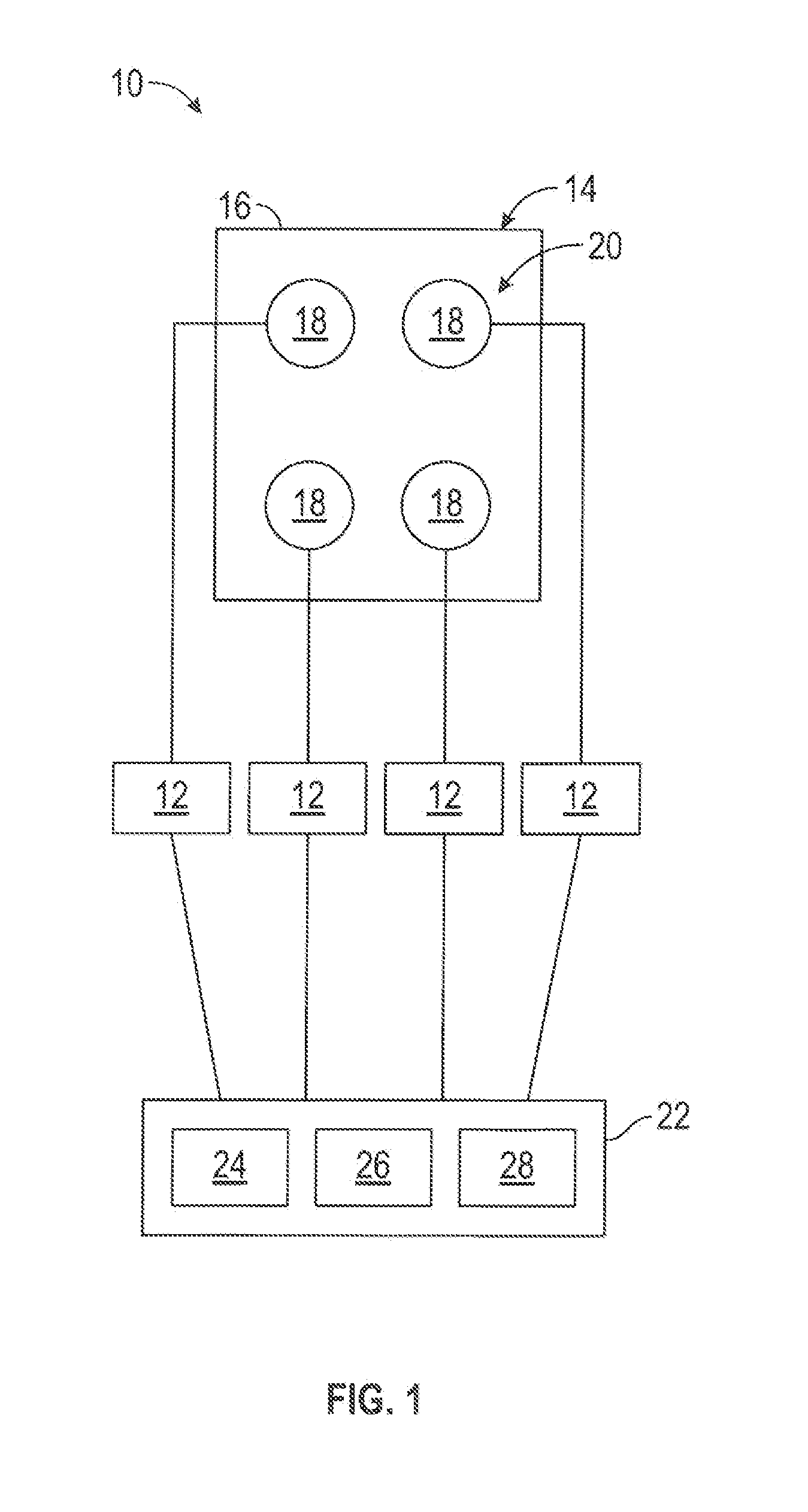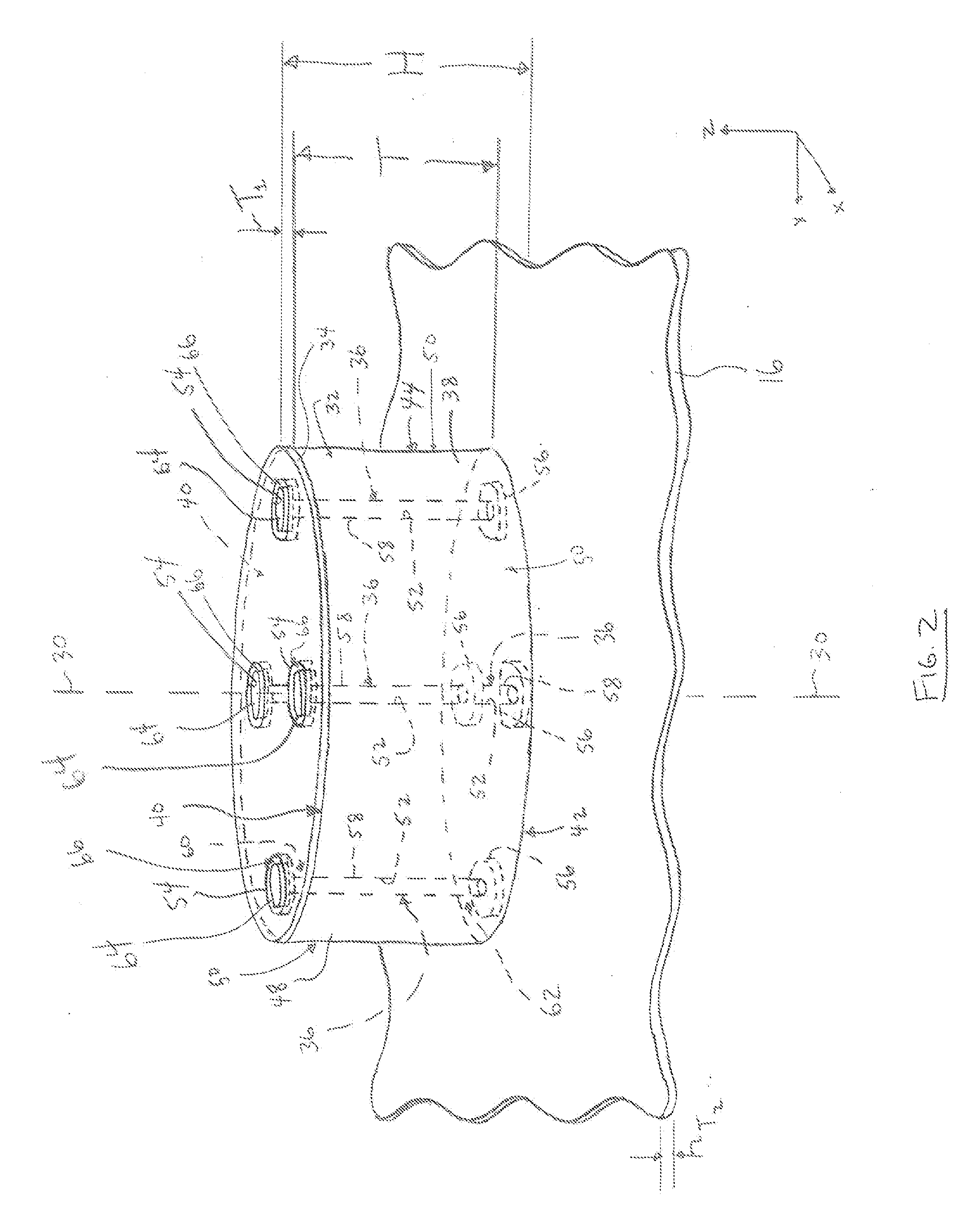Compact wideband patch antenna
a patch antenna and wideband technology, applied in the field of patch antennas, can solve the problems of patch antennas not being able to communicate with such a gnss satellite constellation, patch antennas being too narrow to overlap the frequency band of a second gnss, and not being able to communicate with the second gnss satelli
- Summary
- Abstract
- Description
- Claims
- Application Information
AI Technical Summary
Benefits of technology
Problems solved by technology
Method used
Image
Examples
Embodiment Construction
[0019]FIG. 1 is a schematic diagram of an exemplary embodiment of an antenna system 10. The antenna system 10 includes a plurality of feed networks 12 and an antenna assembly 14. The antenna assembly 14 includes a ground plane 16 and one or more patch antennas 18 positioned on the ground plane 16. In the exemplary embodiment of the antenna system 10, the antenna assembly 14 includes an array 20 of four patch antennas 18. But, the array 20 may include any number of patch antennas 18, the antenna assembly 14 may include any number of the arrays 20, and the antenna assembly 14 may include any number of patch antennas 18 overall. In some embodiments, the antenna assembly 14 includes only a single patch antenna 18. The patch antennas 18 may be arranged within the array 20 in any other pattern than is shown in FIG. 1.
[0020]The antenna system 10 may function as a transmitting antenna system that transmits RF waves into the environment (e.g., the atmosphere) of the antenna system 10, as a r...
PUM
 Login to View More
Login to View More Abstract
Description
Claims
Application Information
 Login to View More
Login to View More - R&D
- Intellectual Property
- Life Sciences
- Materials
- Tech Scout
- Unparalleled Data Quality
- Higher Quality Content
- 60% Fewer Hallucinations
Browse by: Latest US Patents, China's latest patents, Technical Efficacy Thesaurus, Application Domain, Technology Topic, Popular Technical Reports.
© 2025 PatSnap. All rights reserved.Legal|Privacy policy|Modern Slavery Act Transparency Statement|Sitemap|About US| Contact US: help@patsnap.com



